
My first stop on Oahu is Foodland so I can get a poke bowl. I am on my way to Kalaupapa National Historical Park on Molokai. I thought I was prepared by previous interns on what to expect from the flight in, but it is jaw-dropping. The north shore of Molokai is made up of towering sea cliffs, some of the tallest in the world– 2000’ straight to the water. At the base of the cliffs is a small sea-level peninsula jutting out into the Pacific, my destination, the Kalaupapa peninsula. On the flight, I can see a small settlement on the more protected western side, and at the northern end a lighthouse and runway. The Pacific Ocean batters the basalt shoreline and the constant easterlies keep the climate comfortable. Glauco Puig-Santana, the NPS biological technician meets me at the airstrip. I get the rundown on how life works here in Kalaupapa. We drive slowly around the settlement where I will be staying for the next three weeks.
Kalaupapa has a storied history. The peninsula was inhabited by Native Hawaiians for at least 800 years. There is evidence of settlement everywhere. Ahupua’as, heiaus, and taro terraces demonstrate the deep connection with the land and these sites remain some of the best-preserved archaeological sites in the Hawaiian islands.
This is only part of the history. In the 1800s, leprosy, or Hansen’s disease was spreading throughout the Hawaiian Islands. A mysterious and feared disease, it was ravaging the population of Hawaii, and the government saw only one option, to isolate people with the disease to stop its spread.
Kalaupapa is remote and inaccessible. Cut off from ‘topside’ Molokai by the pali (cliffs), there is just one switchback trail connecting the peninsula to the rest of the island and to travel here by water is not much easier. Difficult to get to and at the same time, difficult to leave. In 1865, legislation was passed and approved to acquire Kalaupapa as the location for the forced segregation of Hansen’s disease patients. The Native Hawaiians still living on the land were displaced, and in 1866 the first group of 12 patients was literally dropped off, with no help or plan for how they were going to sustain themselves.

Over the next 100 years, more than 8,000 Hansen’s disease patients died at Kalaupapa. The forced isolation tore families apart and children were separated from their parents. The lack of respect for these people is a demonstration of humans’ great capacity for darkness when we lose compassion and are overcome by fear. However, at Kalaupapa, one can reflect on people’s capacity for lightness as well. There were those who came to Kalaupapa despite the fear of the disease, kokua or helpers, who chose to go into isolation with their family members and build a functioning society. Father Damien and Mother Marianne Cope came to Kalaupapa and worked to create decent living conditions and promote dignity. A community was created and existed for the next 100 years.
I think it’s ironic that we now know this mysterious disease that terrified people of the ages is the least contagious of all known communicable diseases. You must spend prolonged time, months to years with someone with the disease to contract it. On top of that, 95% of the population has a natural immunity to Hansen’s disease.
A cure was discovered in 1941 but it wasn’t until 1969 that the isolation ban was lifted. Patients then had the option to stay or leave, and for those who stayed, the community as it stands today was shaped around their needs and the best way to support them. Kalaupapa operates a little differently than most national parks. The NPS administers the site alongside the Hawaii Department of Health. The primary mission is to protect the lifestyle and privacy of the patient community.
There are only four patients left living in the settlement. The rest of the community is made up of DOH and NPS employees. A total of about 60 people work here, but over my three weeks, I only see a handful of people each day.
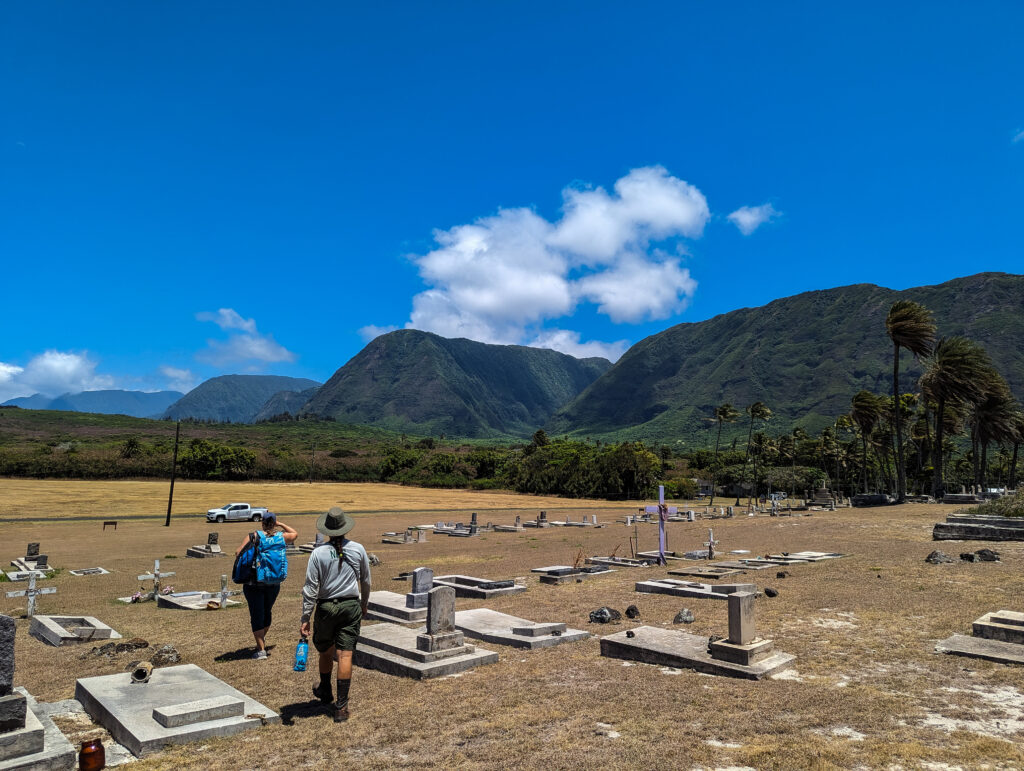
The settlement is quiet, on the drive from the airstrip Glauco and I pass tall coconut and date palms and hundreds of grave markers. The settlement nowadays has a church, general store, post office, community hall, and residences. Life is lived at a slower pace here and treading lightly is important.
Glauco shows me to the old nurse’s quarters, a wood-framed house with a lanai where I will be living. He generously welcomes me with a fruit basket of mango, papaya, soursop, avocado, and mountain apples.
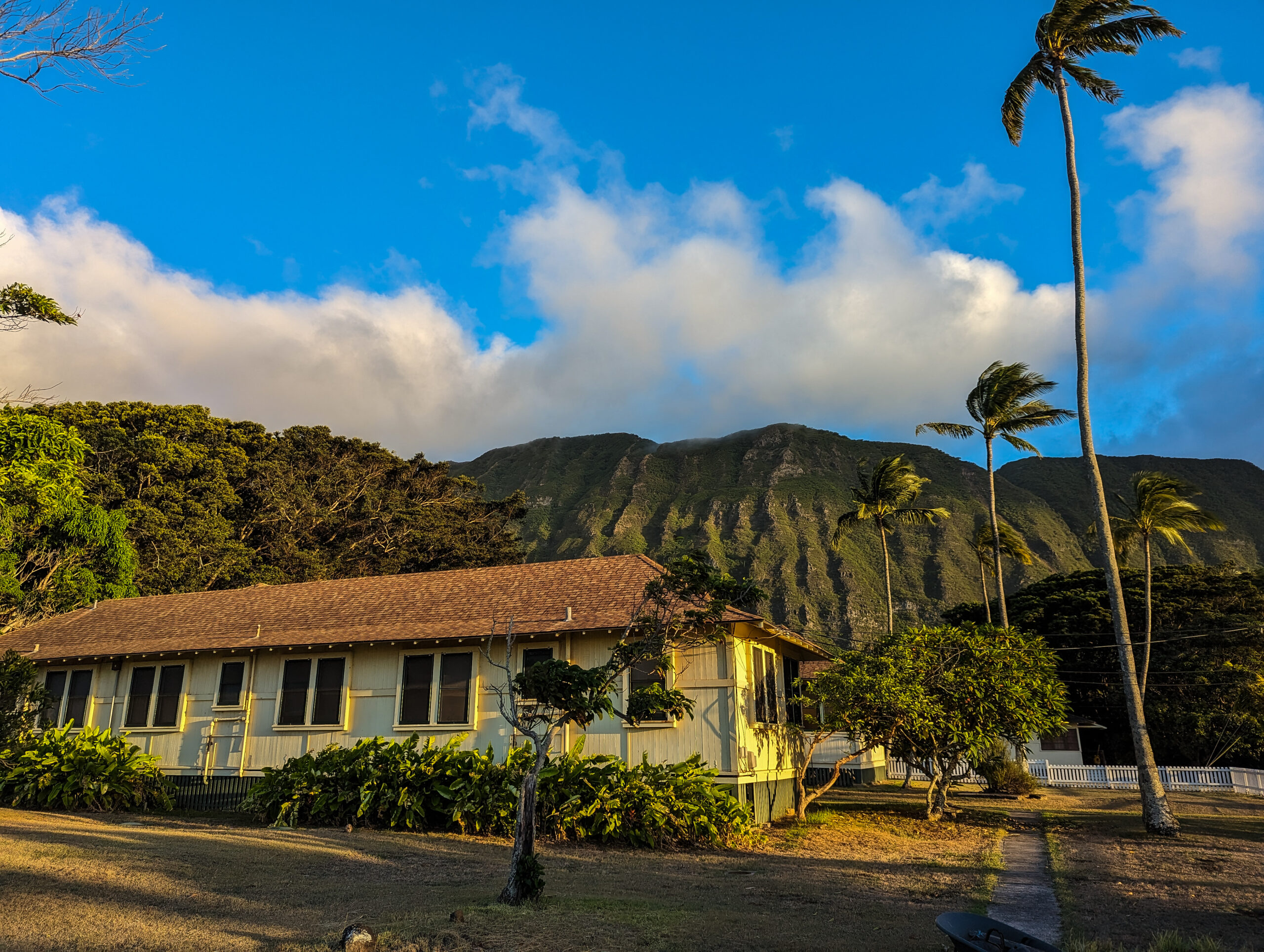
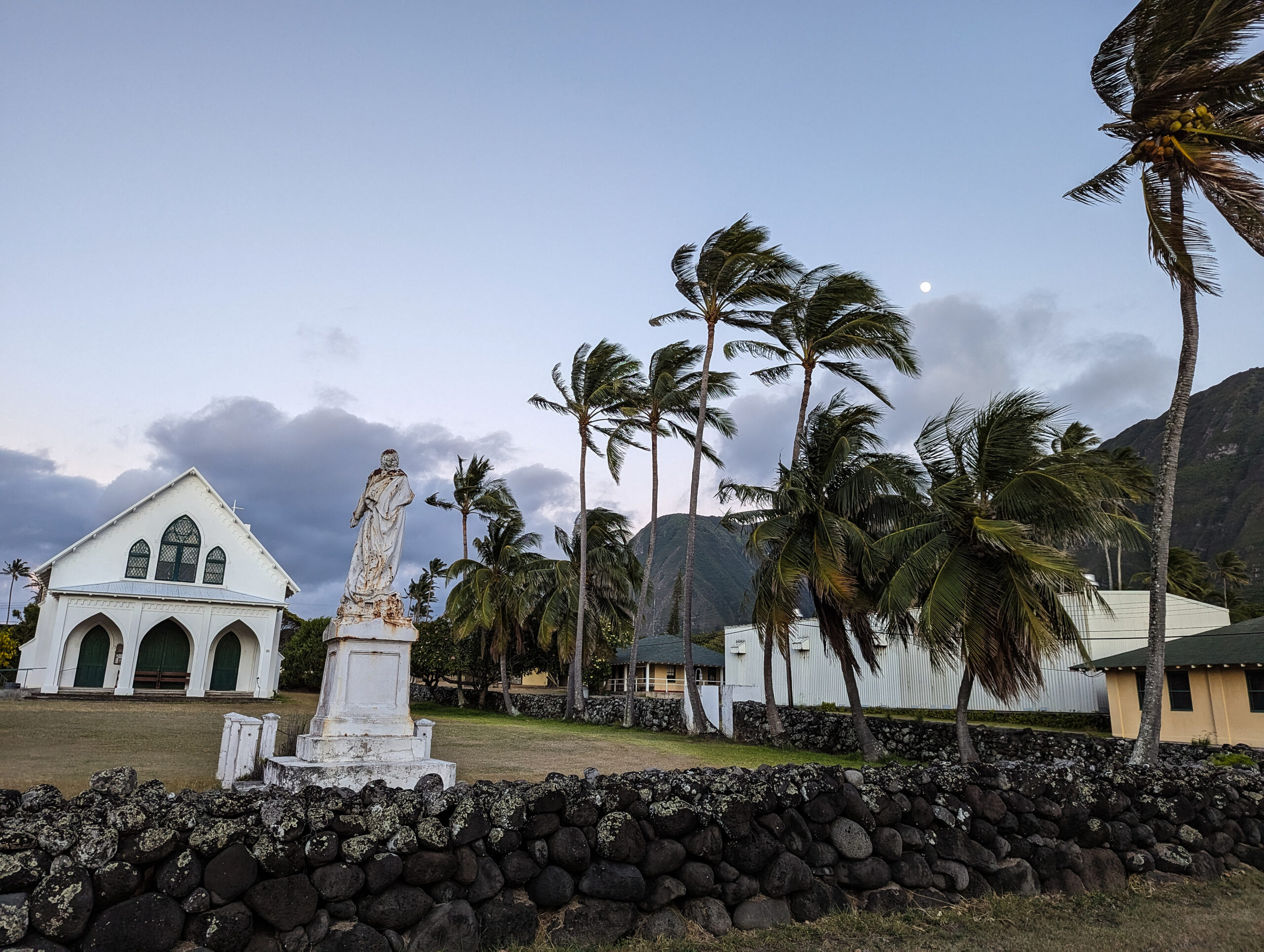

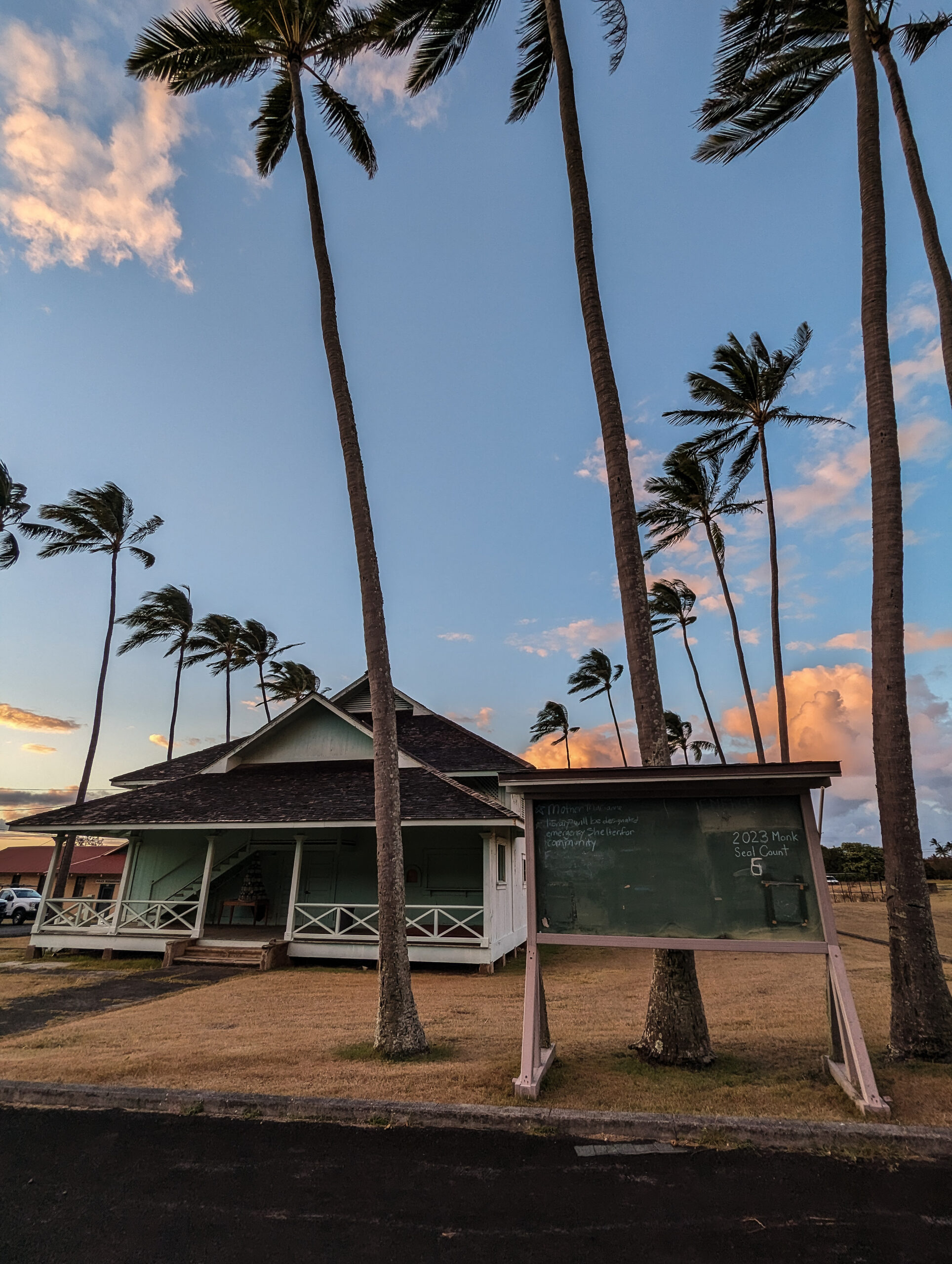
I am in Kalaupapa to help the marine program complete their Inventory and Monitoring benthic surveys. A quarter of the park is underwater and it is a spectacular volcanic boulder habitat that supports some of the healthiest nearshore fish communities in the main Hawaiian islands. However, this first week, Kelly Moore the park ecologist is off-island, so I won’t be diving until she gets back. This means that I get to explore some of the other natural resources teams’ responsibilities.
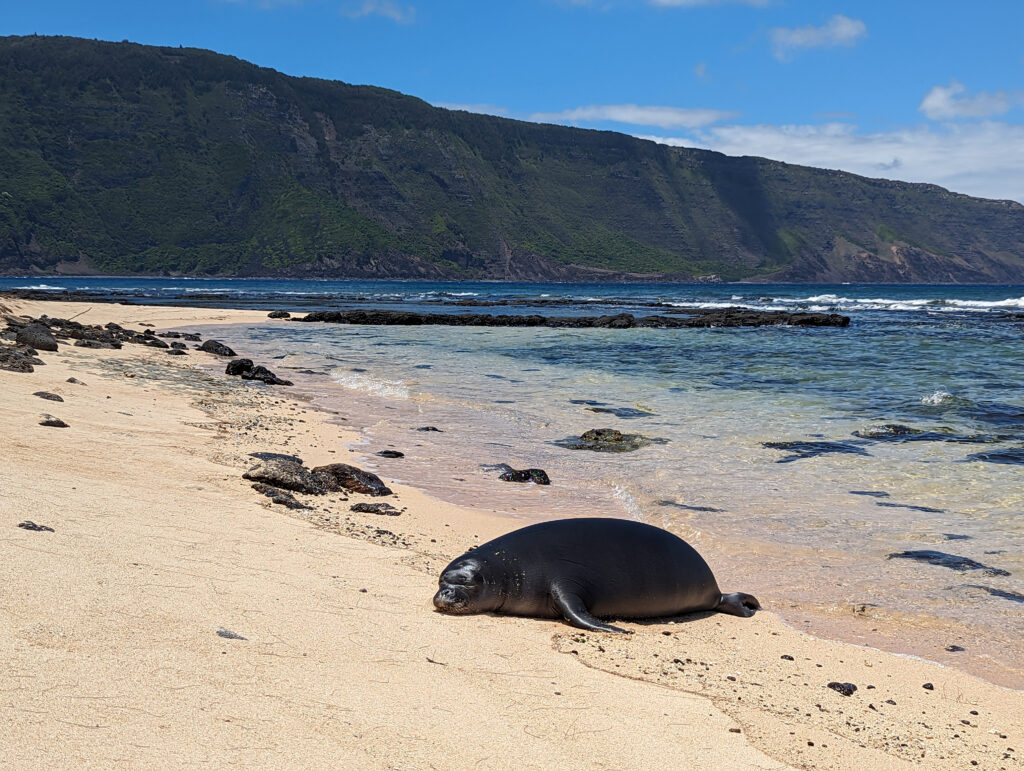
My time at Kalaupapa overlaps with Kirby Parnell, a Ph.D. student from UH Manoa, studying Hawaiian monk seal vocalizations. Hawaiian monk seals are endemic to the Hawaiian archipelago and extremely endangered with a population of only about 1600 individuals. The beaches at Kalaupapa are one of the most important pupping beaches in the main Hawaiian Islands, if not the most important. The NPS works with NOAA to monitor the seals under National Marine Fisheries Service (NMFS) Permit# 22677.
Glauco, Kirby, and I spend our days surveying for monk seals, IDing them from afar with binoculars as they bask on the black basalt rocks or nap on the beach. It has been a low year for seal pups, there have only been 6 pups born here this year as compared to 12 last year. I watch the moms and pups float upside down in the shallow pools or sleep with their heads underwater, blowing bubbles. It is very cute. There are three newly weened pups which means we will be tagging them and vaccinating them this week. Tags include flipper tags and a PIT tag. The vaccination is for morbillivirus.
Kirby is also here to deploy a sound trap underwater that will be recording sounds for the next month or so and will pick up seal vocalizations in the area.
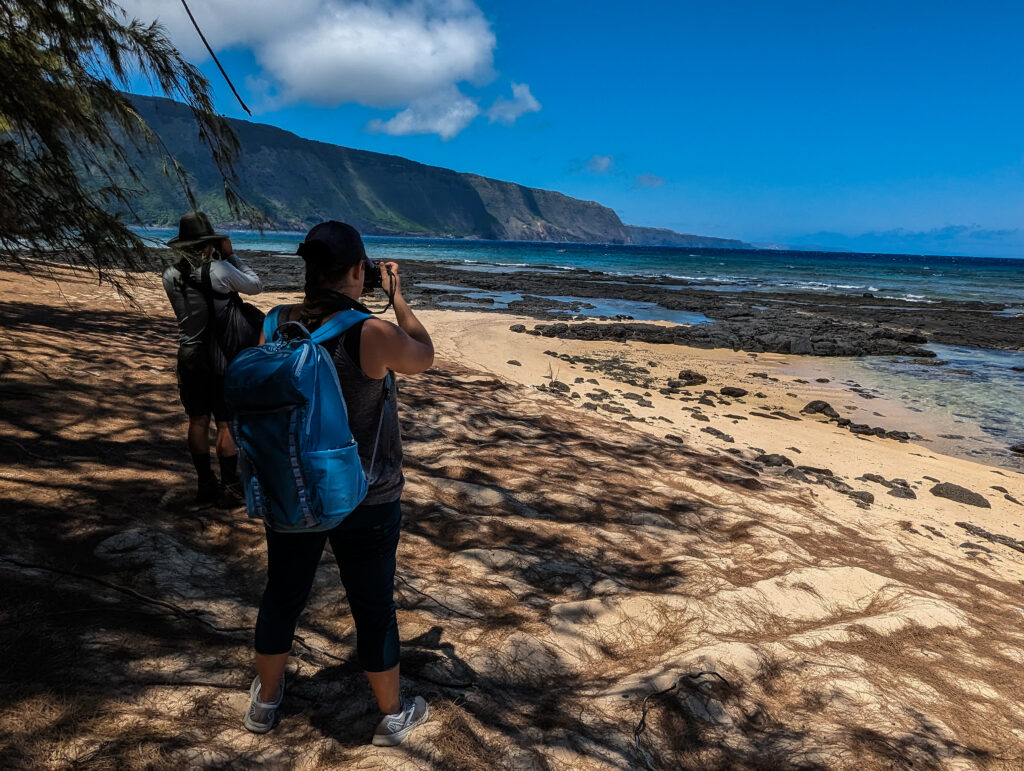
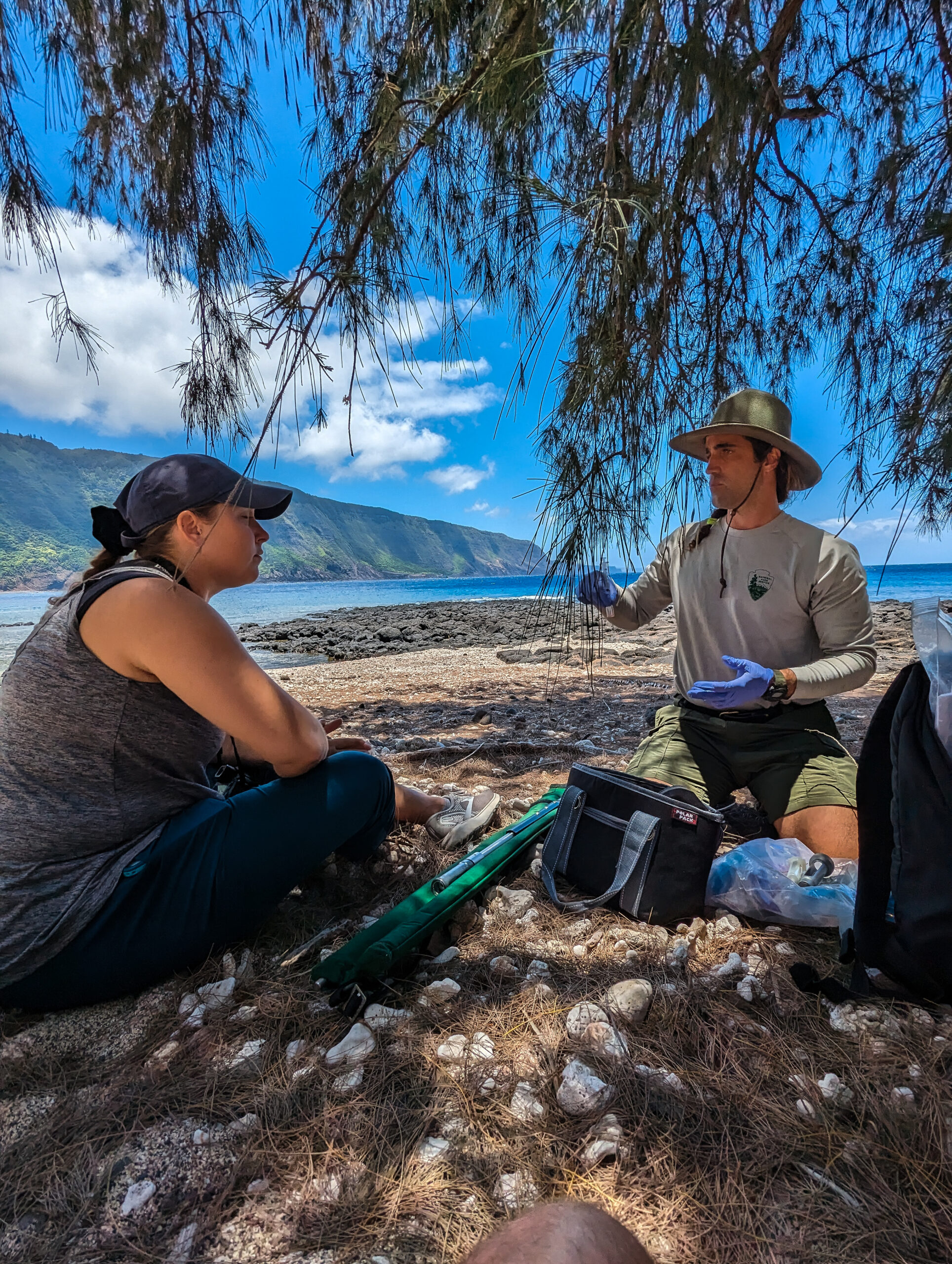
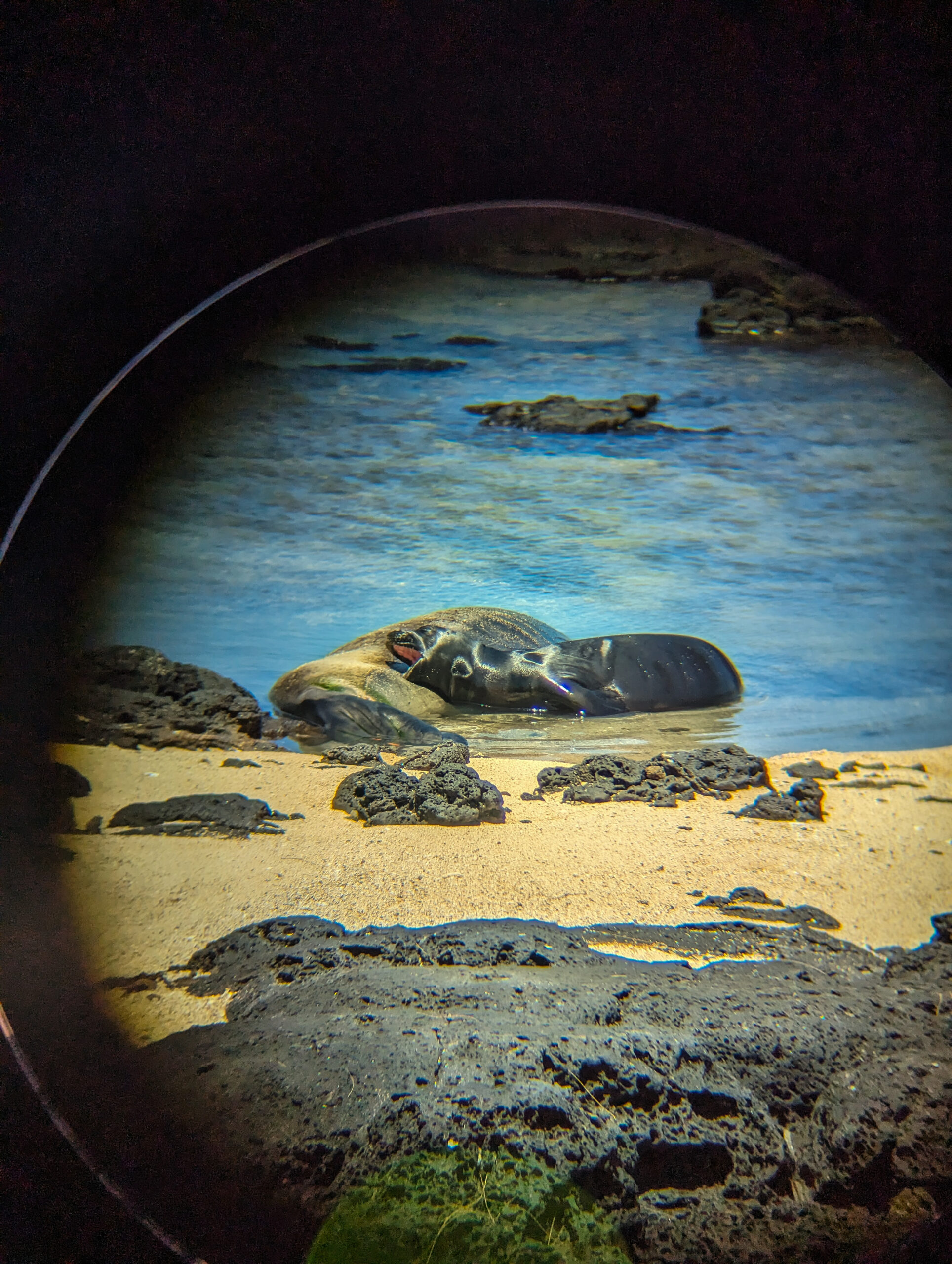
We get a chance to tag our first weened pup today. Ultimately, we want to stress the seal as little as possible so we go over the plan meticulously. Glauco will be restraining the seal, I will be helping restrain the rear, and Kirby will be tagging and vaccinating. We sneak up on the pup sleeping in the sand and work quickly and efficiently. The seal definitely doesn’t appreciate it as she snorts, snarls, and tries to bite Glauco. All goes to plan though and we are finished in a few minutes and can leave the seal alone.
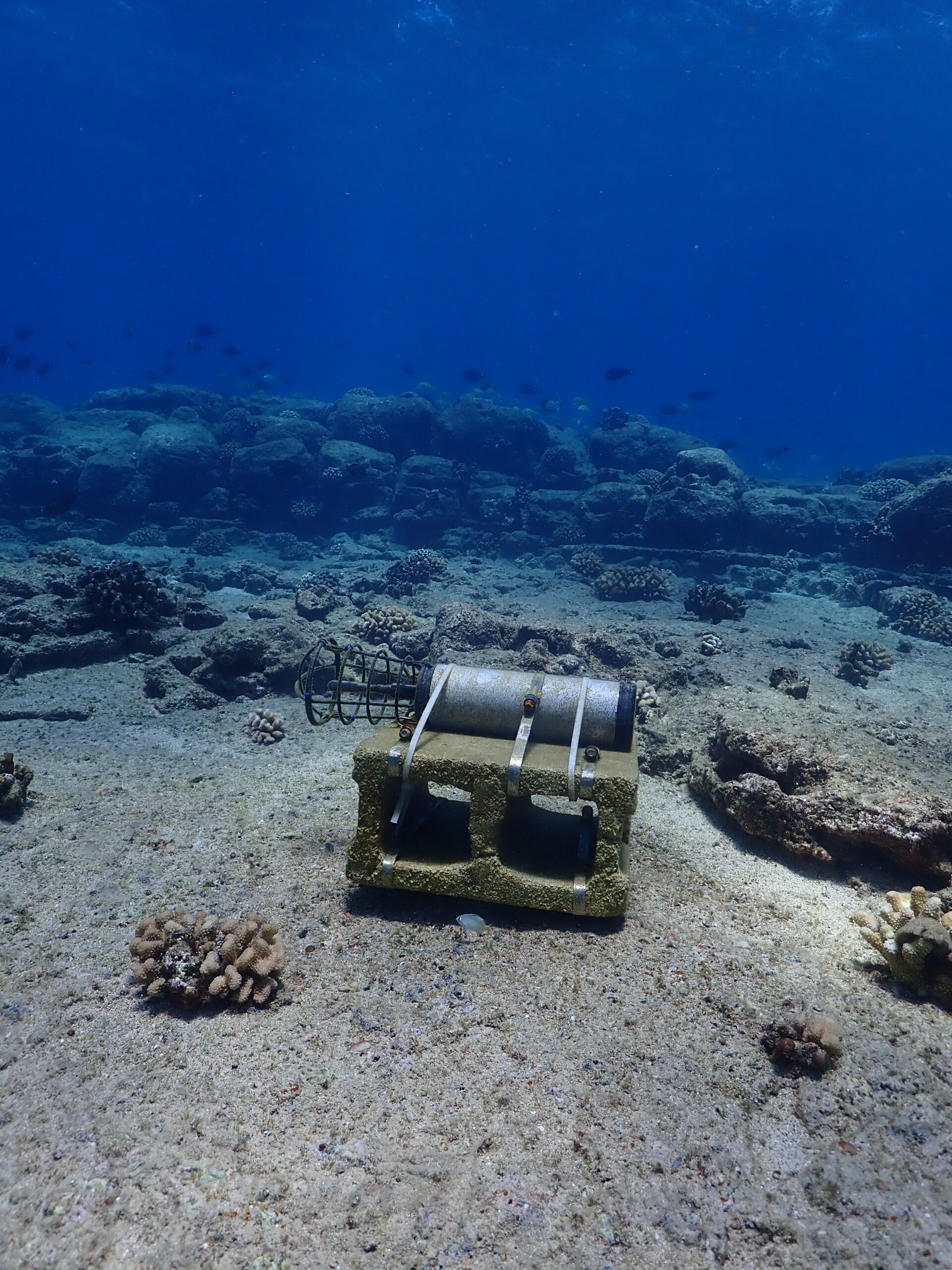

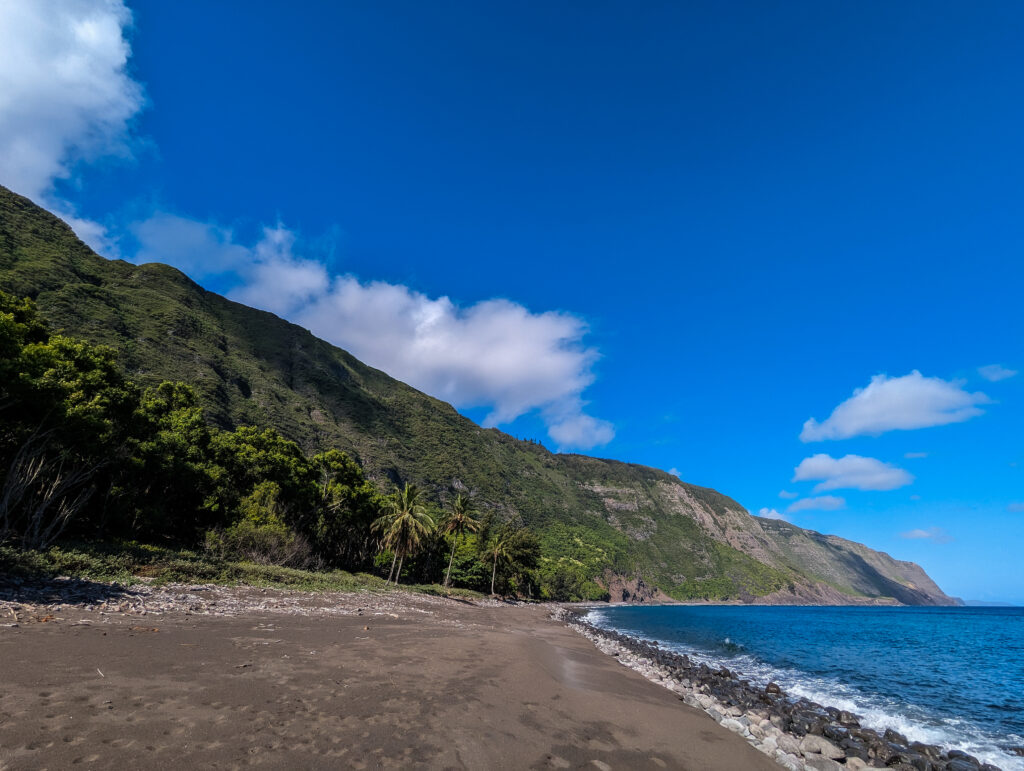
Today, I have the sweetest papaya for breakfast. Glauco and I head over to the black sand beach to patrol for sea turtle tracks. We do this most days. The surveys are in partnership with the State Department of Land and Natural Resources. Unfortunately, it has been a couple years since any turtle has nested here but it is still important to keep checking just in case.
Afterward, Glauco and I go to the old, rusty single-pump gas station and wait in line to fill up. The station is open once or twice a week for a few hours so it’s not uncommon for everyone to get their allotted fuel of six gallons when they can. We fill up the vehicles and the cans for the boat.
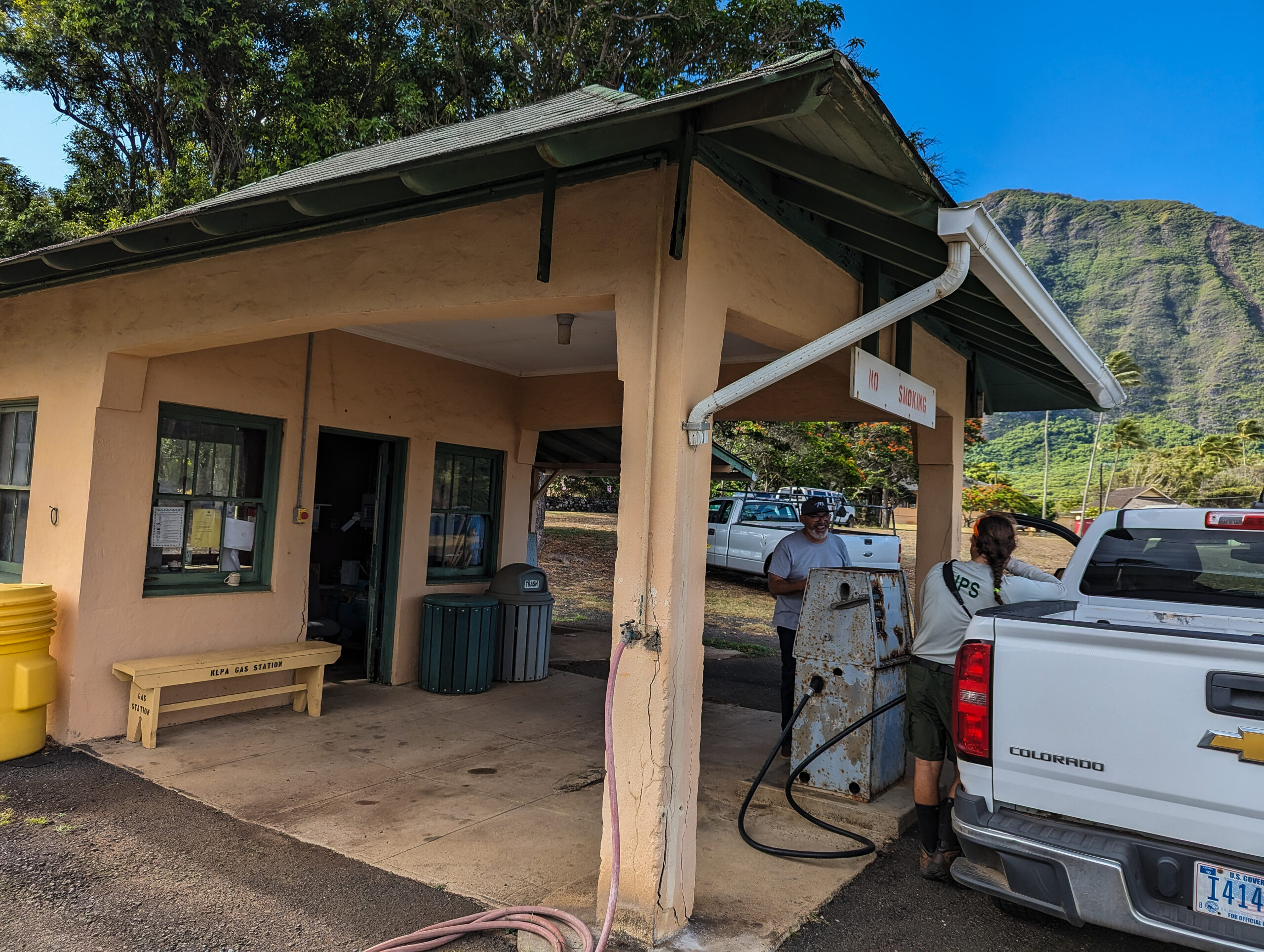
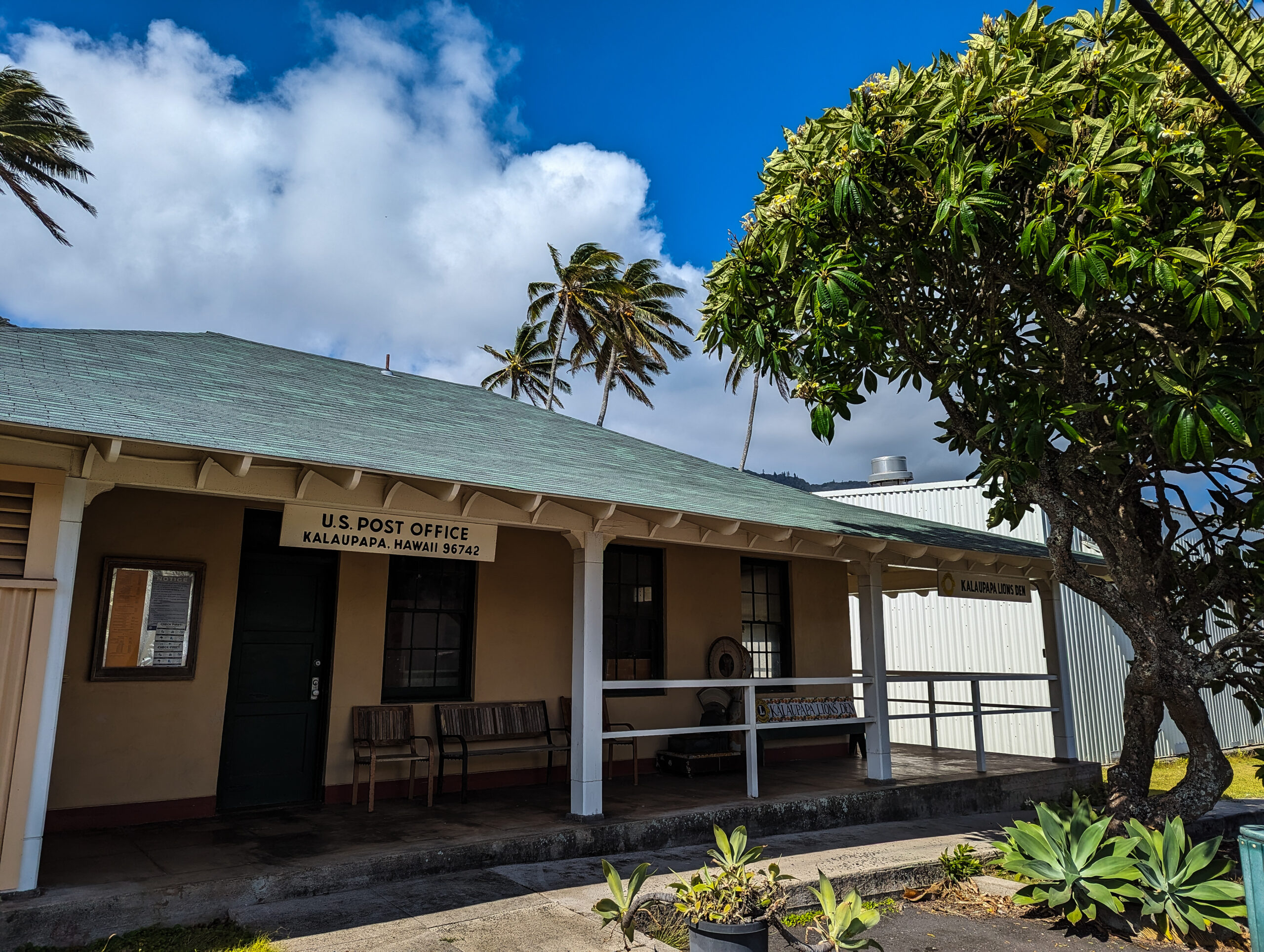
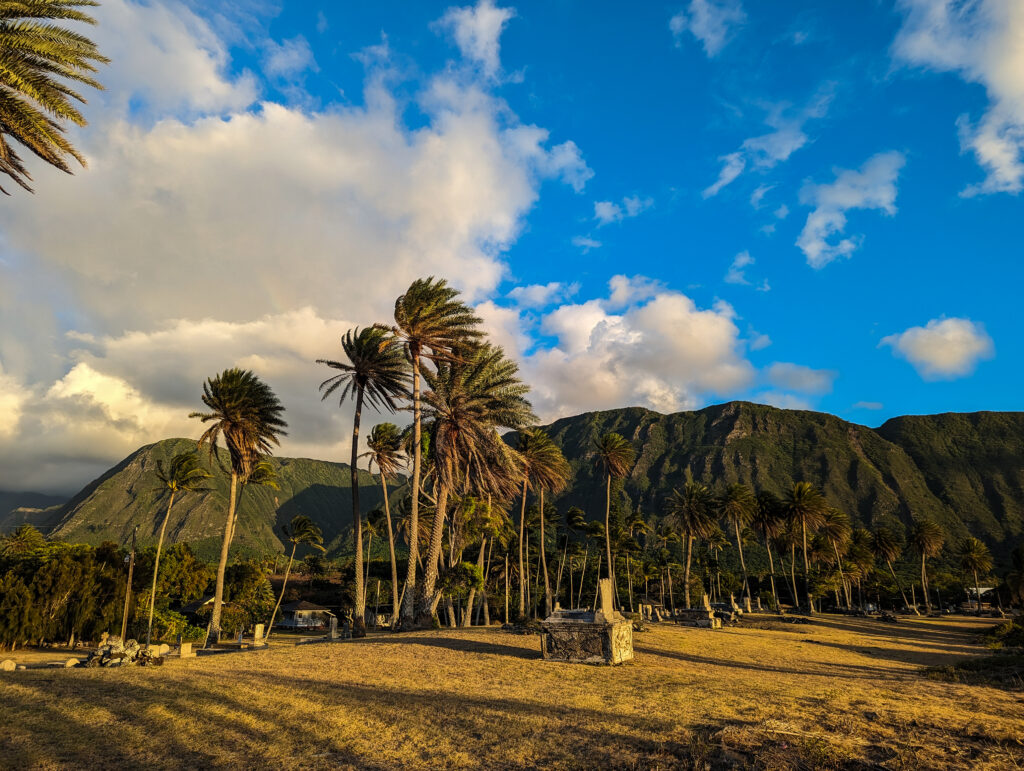
Kalaupapa has a Remote Automatic Weather Station (RAWS) that monitors atmospheric conditions. One day, Glauco and I head out to replace some of the instruments that are due for servicing. The station measures wind speed, precipitation, temperature, humidity, and solar radiation. The weather data collected is used in wildland fire management, climatology, resource management, etc. The data from the station has shown that average and maximum air temperatures at Kalaupapa since 1993 have increased. Also, 2022 was the second driest year on record since 1993.

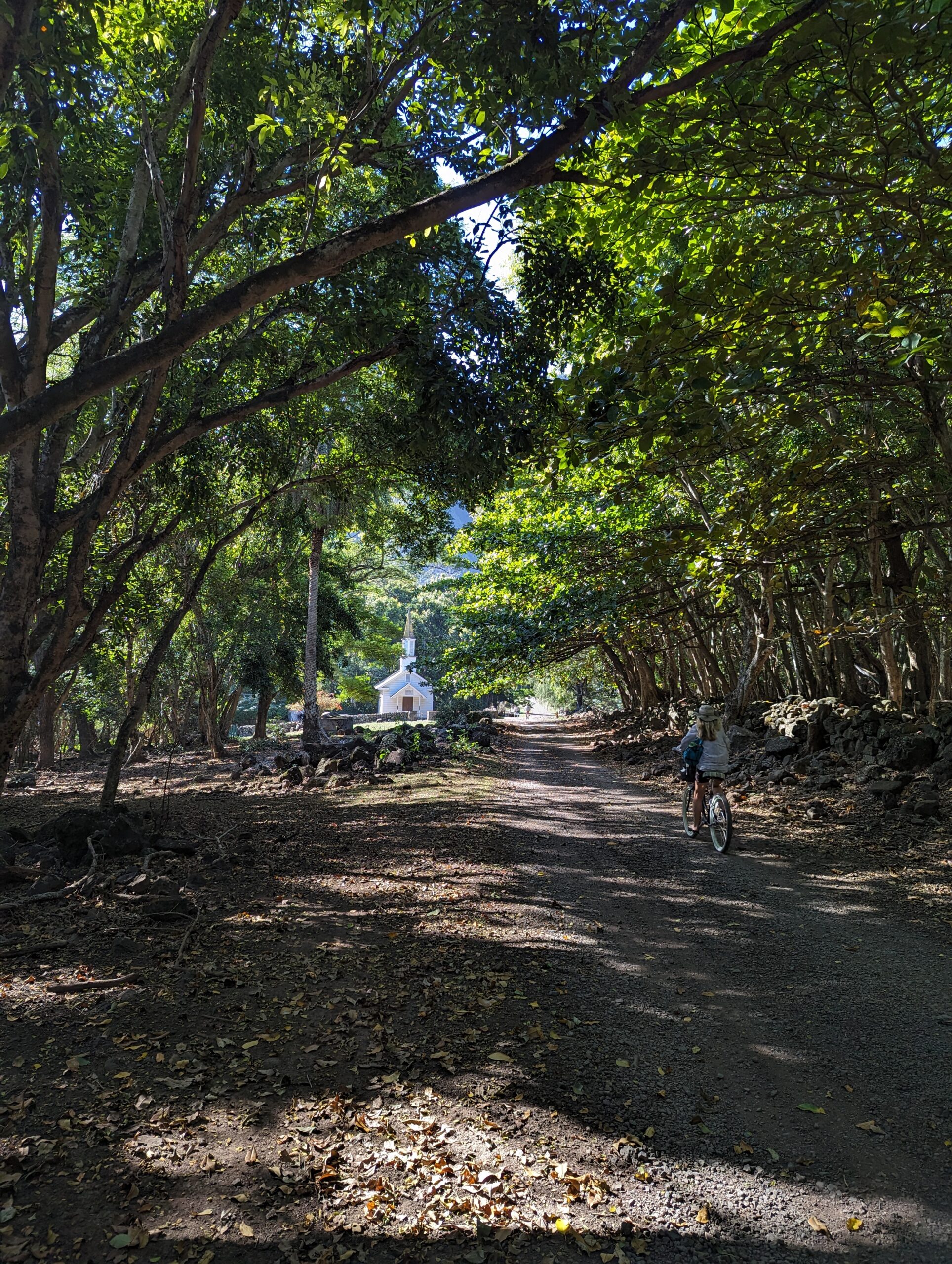
Another project going on in the park is marine debris collection. We head out past the cattle guard and Kauhako crater. There are more archaeological sites and we drive through a non-native forest full of non-native axis deer to Kalawao on the eastern side of the peninsula. The original settlement was here, but it eventually moved because this side is more inhospitable, with more wind and rain. All that is left are two churches and a graveyard. I get my first look down the eastern side of Molokai and its breathtaking– green valleys dropping into the blue water, and sea stacks offshore. For our marine debris collection, we find a beach on the eastern side. We collect a good amount of debris on the rugged basalt coastline. Of course a lot of Styrofoam and fishing floats. We collect and categorize it and the data is shared with NOAA.
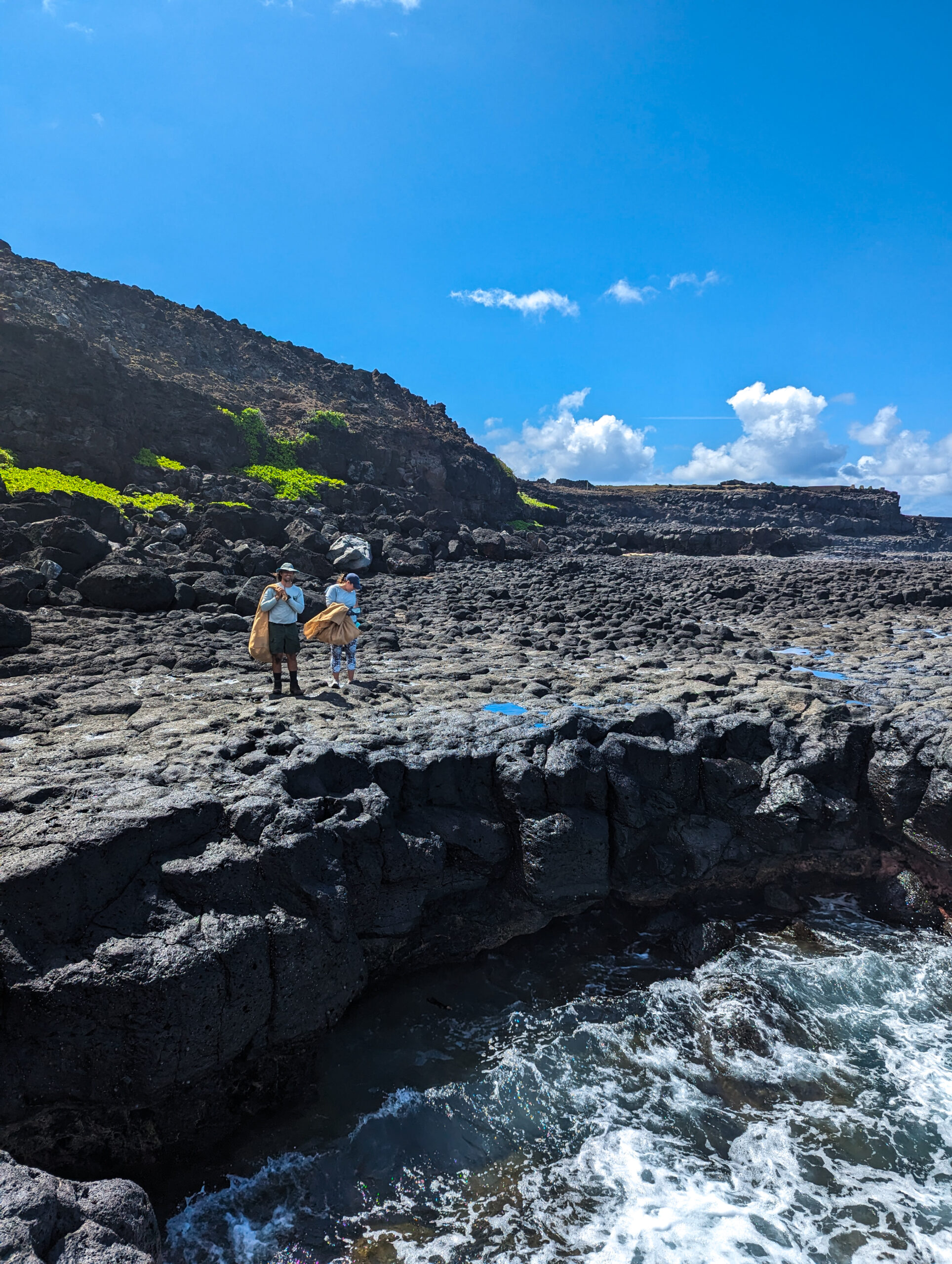
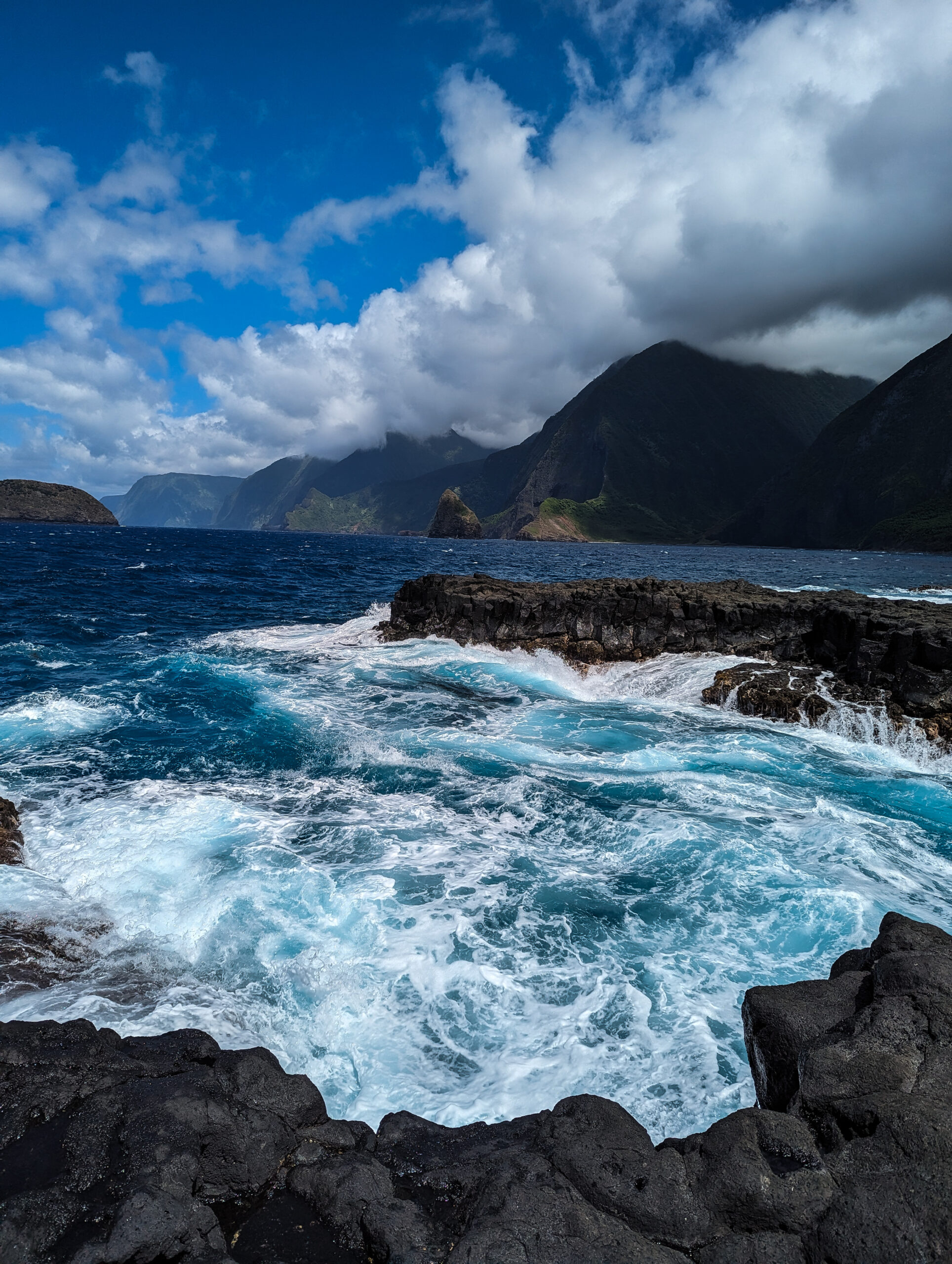
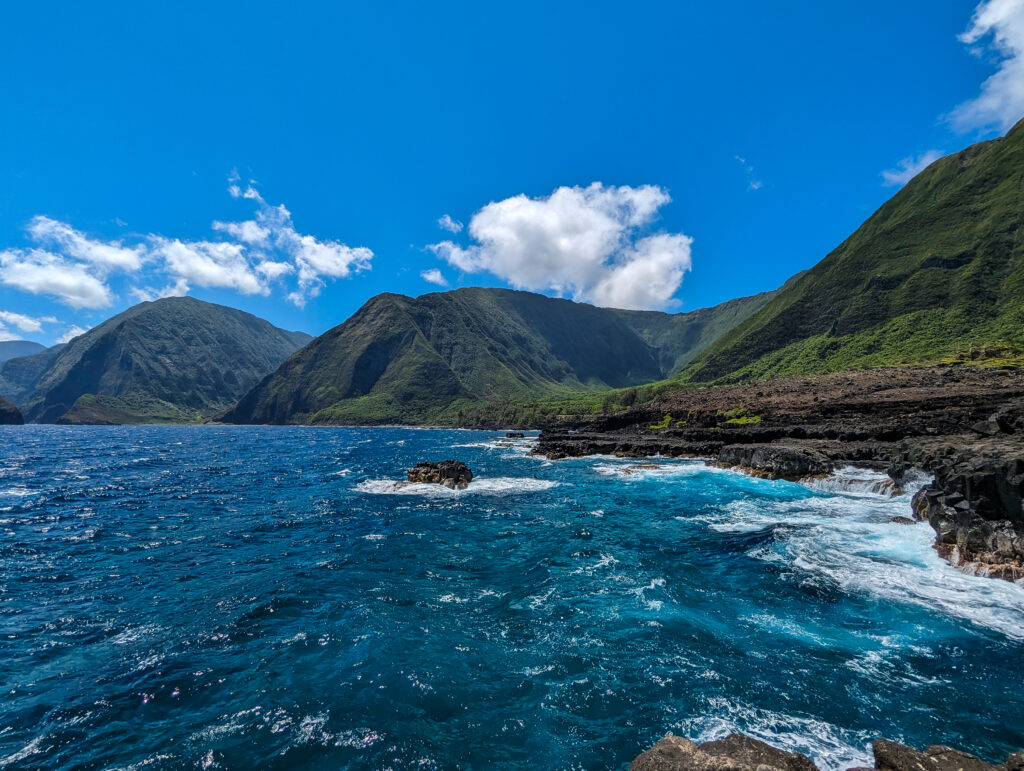
During my time on the peninsula, Glauco lends me a beach cruiser to ride around. I like roaming, collecting mangoes or tamarind from the trees, and taking new roads to get back home. Glauco and I go help Uncle Johnny harvest his banana trees one day. I make sure to stop in the general store when it is open to say hi to some of the residents and get my daily allotted candy bar. While the food is only for residents, visitors can purchase one candy bar/day.
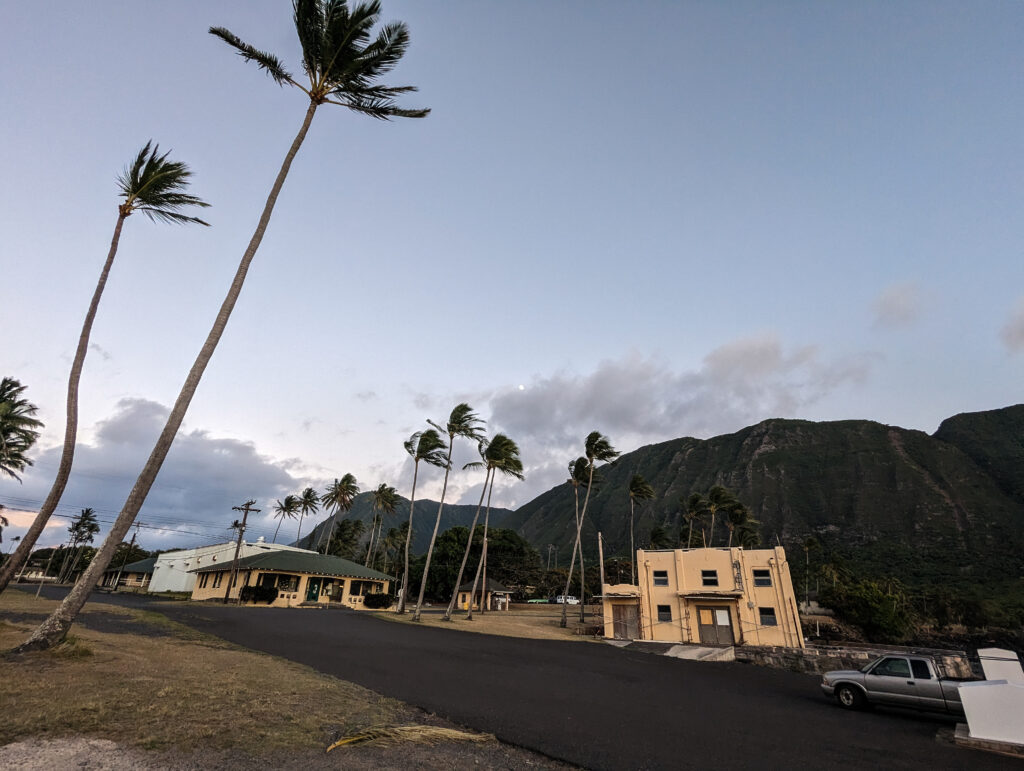
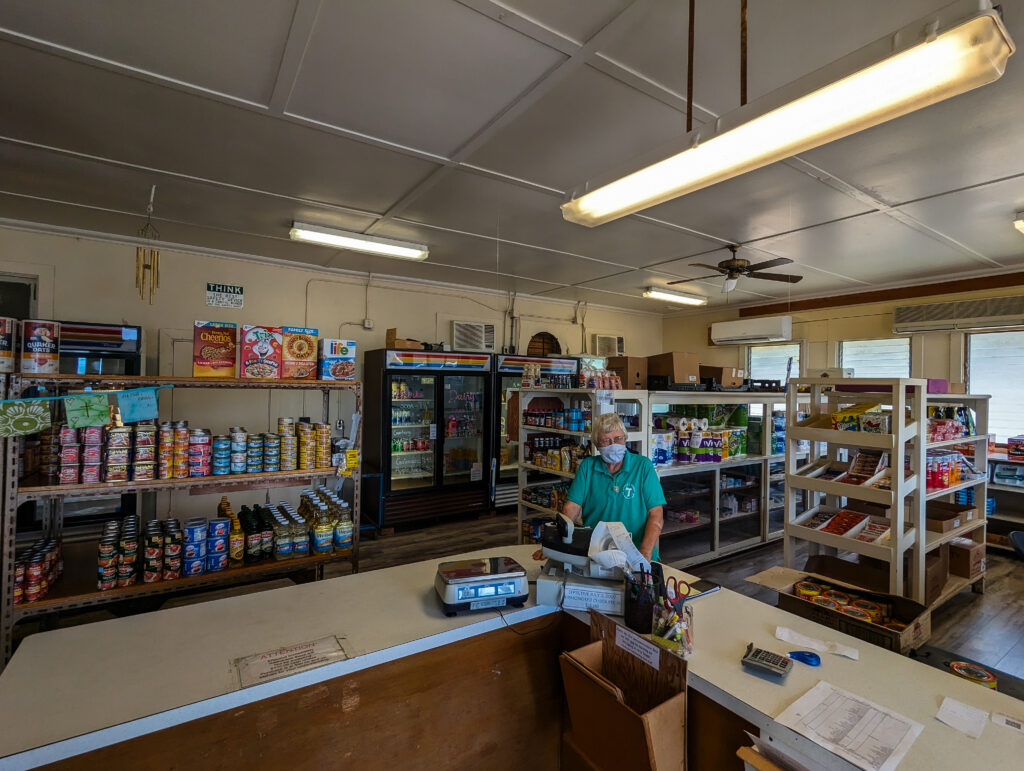

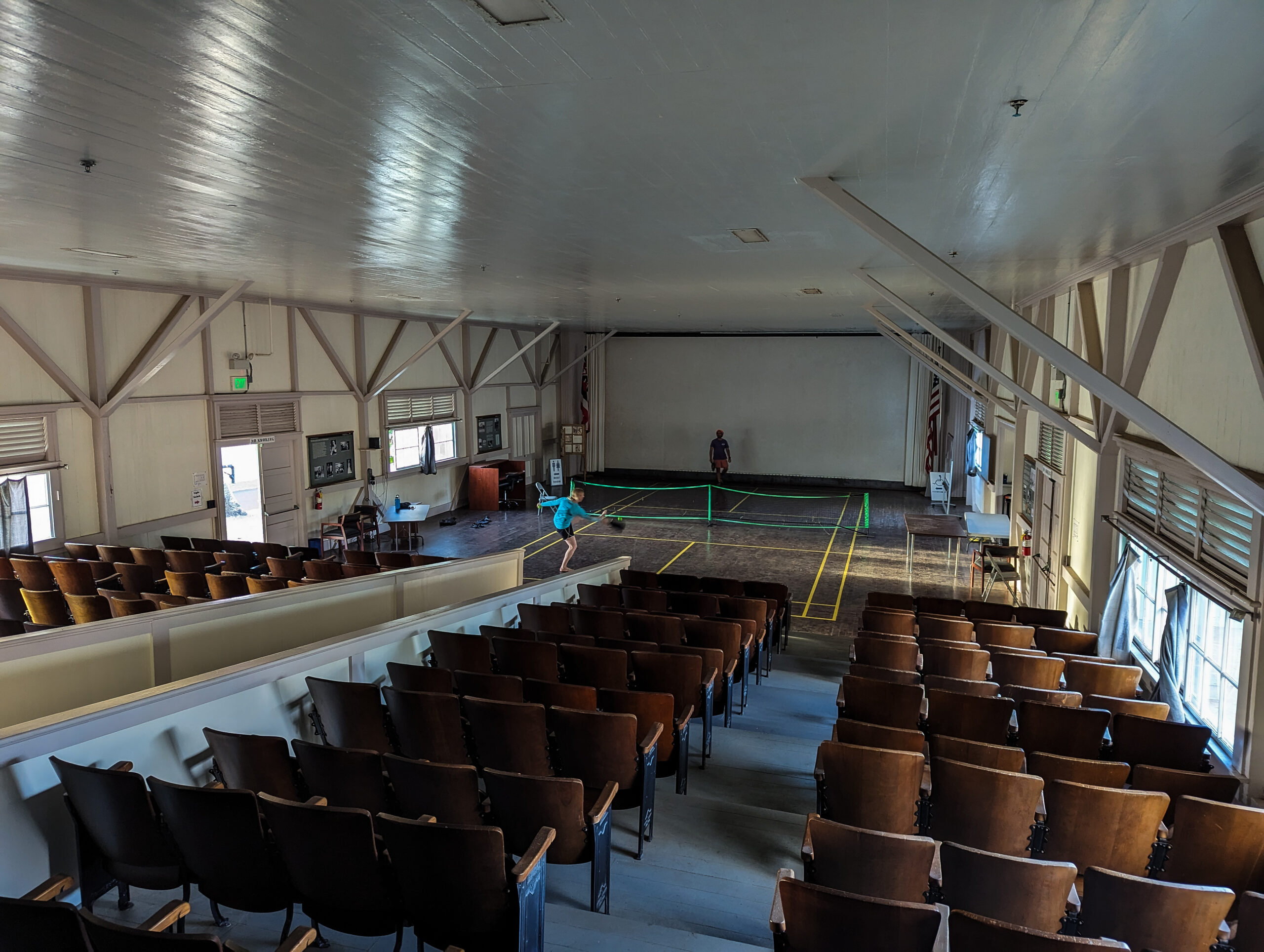
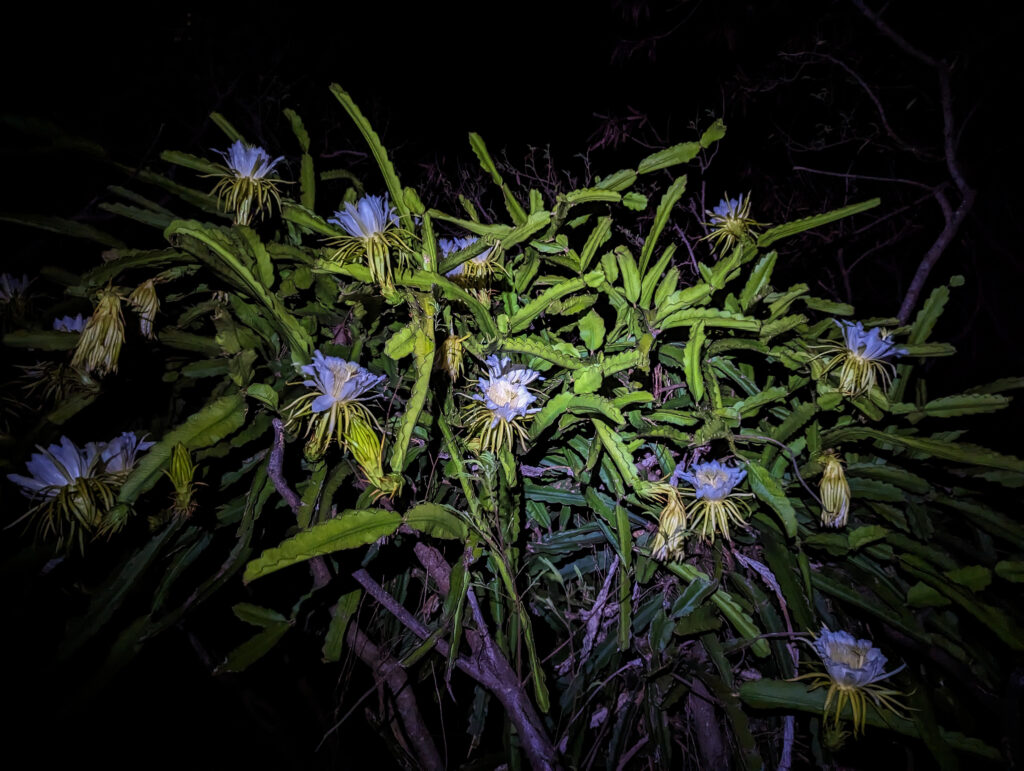
After a week, it’s time for me to get some more groceries so Glauco and I wake up early on Friday to hike up the Pali trail. The trail goes to topside and is a couple miles of switchbacks with about 1500′ elevation gain. On “topside,” I make it to a market in town to pick up some groceries which I will hike back down to the settlement.
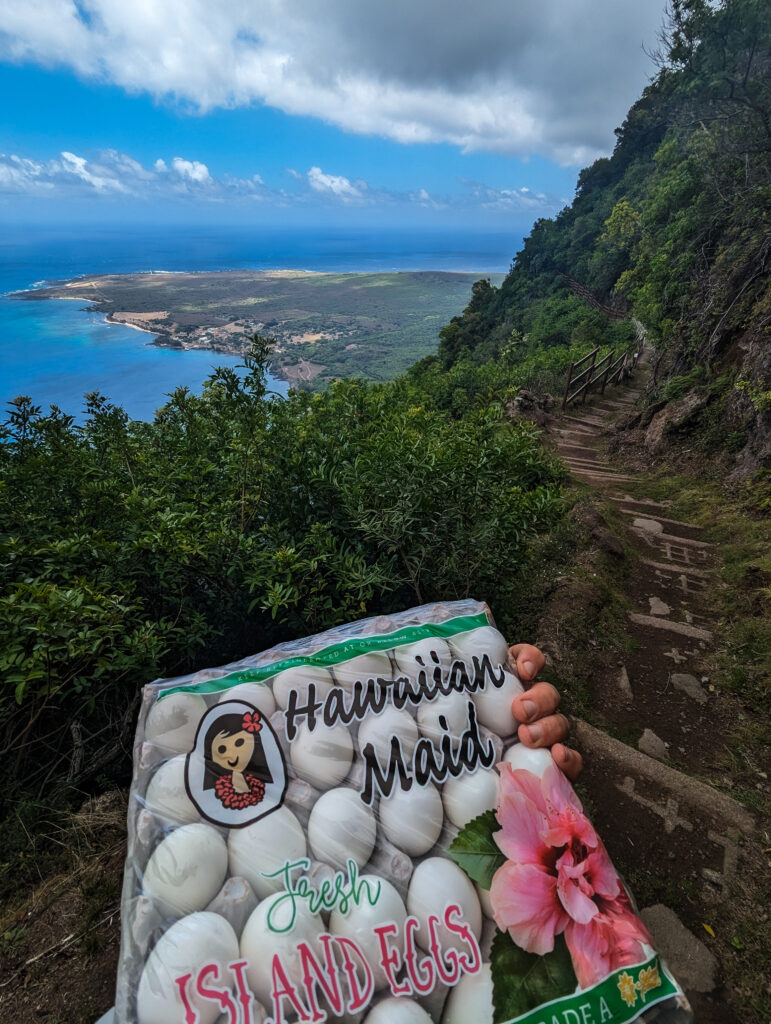
My time on Kalaupapa has been amazing and I haven’t even started diving yet. I’m really looking forward to the next adventure exploring the 25% of the park that is underwater. Please check back for the next blog where I will be helping out with the Pacific Island Inventory and Monitoring Network benthic surveys.
Thank you Glauco for hosting me this entire week and going above and beyond to make my first week in Kalaupapa amazing. And of course, thank you to the Submerged Resources Center and the Our World-Underwater Scholarship Society for making this experience possible with your support.
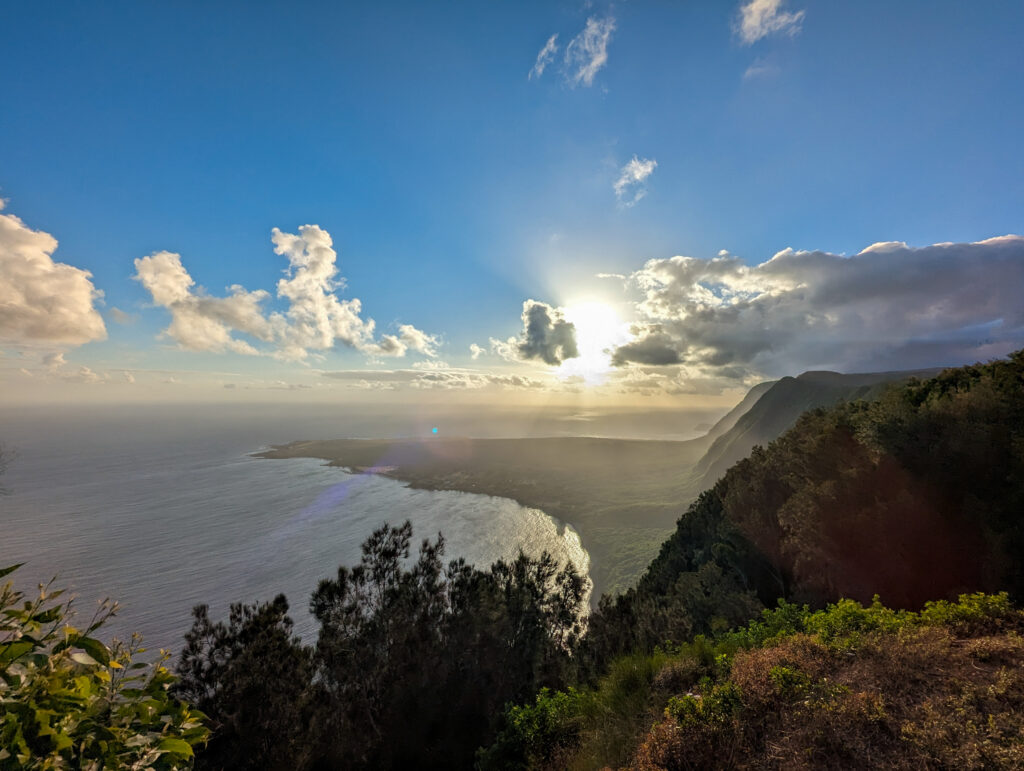
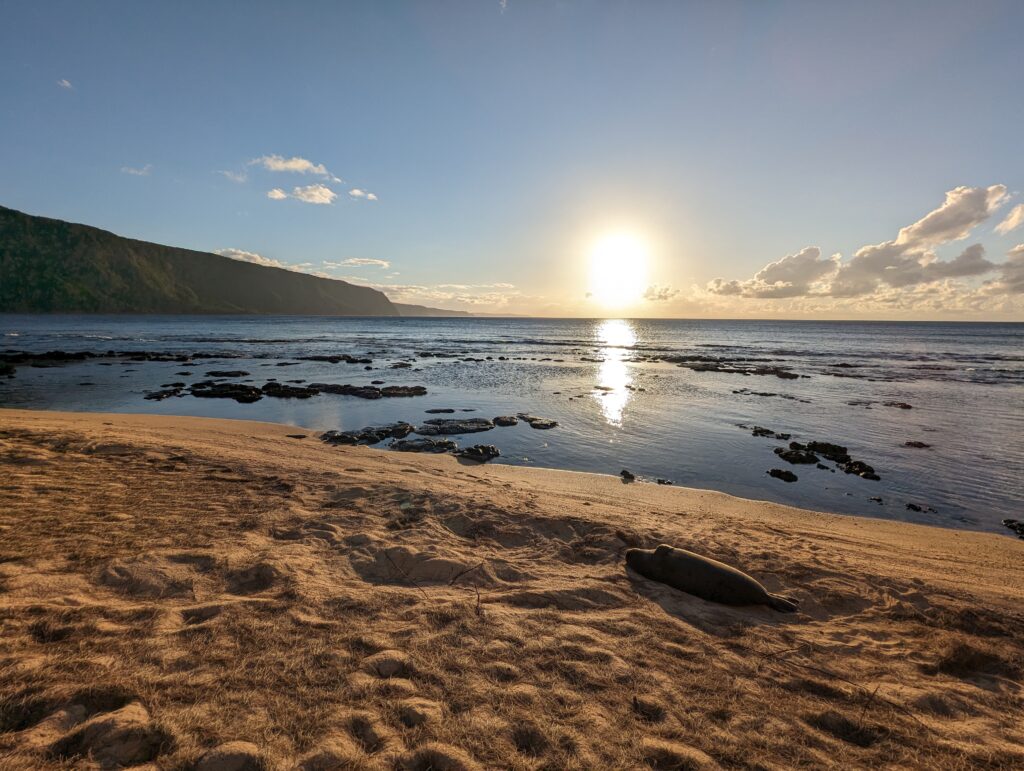


Your detailed description of the landscape, the historical background, and your involvement in the park’s initiatives truly transported me to this remote and historically significant place.
Thank you so much for the kind comment!
The vivid descriptions of the stunning landscapes and the significance of each site give readers a profound sense of connection. Your sensitivity and respect for the people and stories involved shine through, creating a virtual experience that is both educational and emotionally impactful.